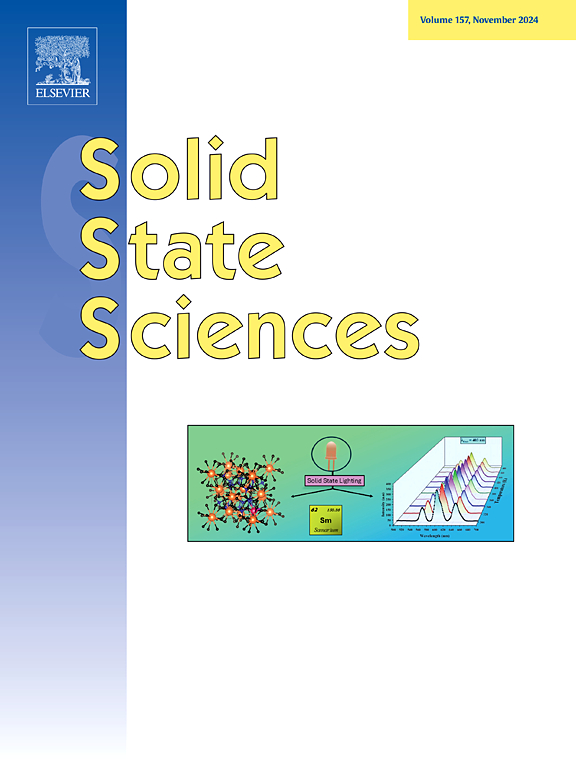Temperature-dependent photocatalytic activity and emergence of weak ferromagnetism in cobalt-incorporated ZnSe quantum dots
IF 3.4
3区 化学
Q2 CHEMISTRY, INORGANIC & NUCLEAR
引用次数: 0
Abstract
Impacts of reaction temperature on the photocatalytic effect of Co-doped ZnSe quantum dots (QDs) have been discussed thoroughly in this article. In this regard, CoxZn1-xSe (x = 0.00, 0.03, and 0.06 wt %) QDs were synthesized using a typical hydrothermal method to provide an easier, workable, affordable way to remove antibiotic pollutants from wastewater. Doping of magnetic impurities (Co2+ ions) in ZnSe QDs transformed the systems into diluted magnetic semiconductors and a signature of weak ferromagnetic behavior was registered at ambient temperature. Therefore, the genesis of weak ferromagnetism in doped systems has also been studied using DFT calculations to flourish their potential use for spintronic devices. Incorporation of cobalt ions introduced weak ferromagnetic signature at 300 K in doped ZnSe QDs, which is ascribed to the p-d hybridization as given by the DFT calculations. Photocatalytic degradation of ciprofloxacin (CIP) antibiotic agent was studied thoroughly by varying pH, temperature and the dosages of doped ZnSe nanocatalysts. It was found that 6 % cobalt-doped ZnSe QDs showed relatively better efficiency and rate constant in degrading CIP. With the increase in temperature (up to 70 °C), a significant increment in both the reaction rate and efficacy was observed for the highest Co-content ZnSe nanocatalysts. These results indicated that the photocatalytic efficiency of the catalyst was affected by the reaction temperature. It should be highlighted that cobalt-doped ZnSe QDs are qualified for efficient nanosized photocatalysts in addition to being competent dilute magnetic semiconductors.

求助全文
约1分钟内获得全文
求助全文
来源期刊

Solid State Sciences
化学-无机化学与核化学
CiteScore
6.60
自引率
2.90%
发文量
214
审稿时长
27 days
期刊介绍:
Solid State Sciences is the journal for researchers from the broad solid state chemistry and physics community. It publishes key articles on all aspects of solid state synthesis, structure-property relationships, theory and functionalities, in relation with experiments.
Key topics for stand-alone papers and special issues:
-Novel ways of synthesis, inorganic functional materials, including porous and glassy materials, hybrid organic-inorganic compounds and nanomaterials
-Physical properties, emphasizing but not limited to the electrical, magnetical and optical features
-Materials related to information technology and energy and environmental sciences.
The journal publishes feature articles from experts in the field upon invitation.
Solid State Sciences - your gateway to energy-related materials.
 求助内容:
求助内容: 应助结果提醒方式:
应助结果提醒方式:


